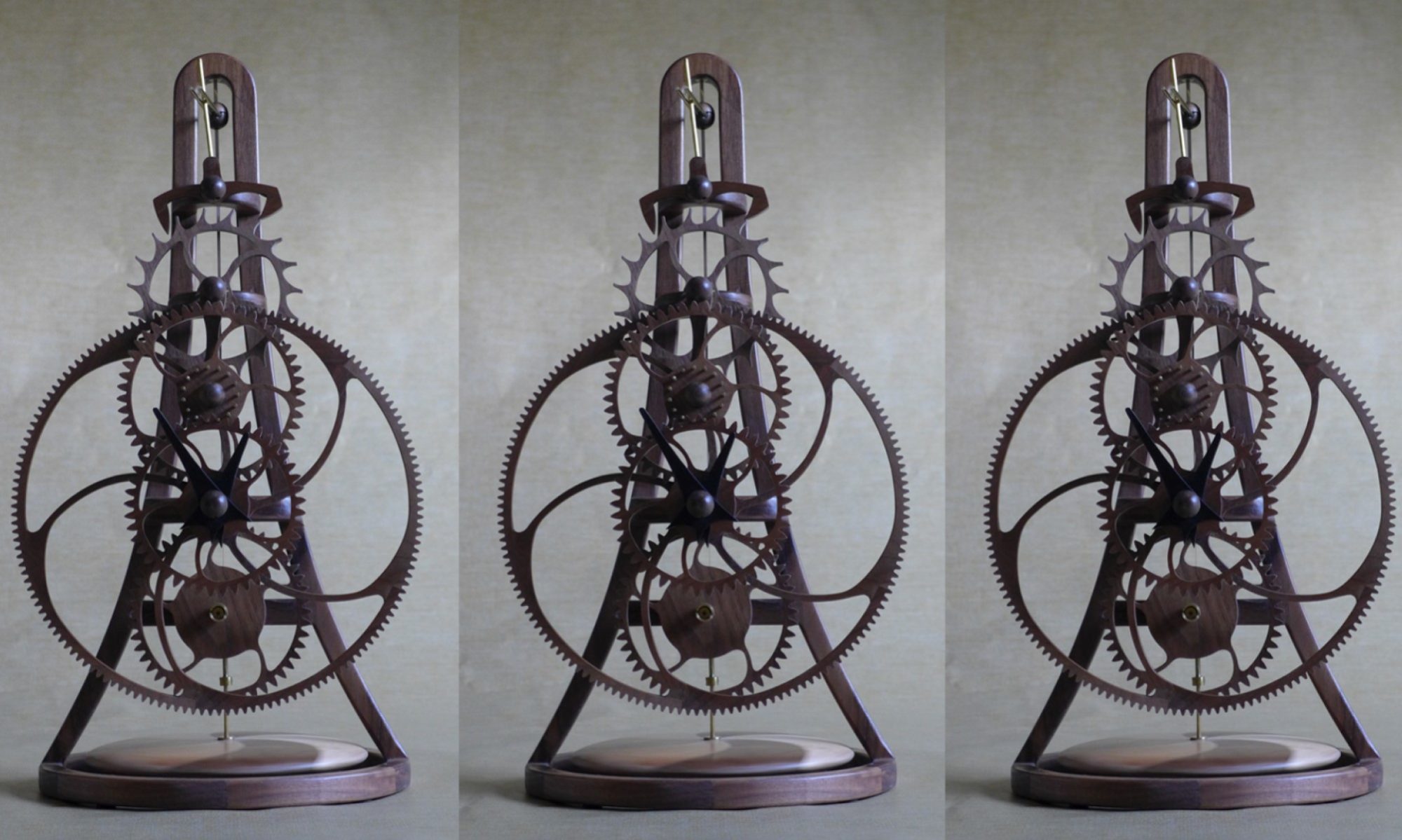The clock was still running this morning and I spent today replacing the brass bearing tube that was too short, trimmed the arbors and the pallet fork to their final lengths and permanently glued components that were press fit together.
I made the video below as I re-assembled the clock.
The clock is running well and the only things left to do are to make the final adjustment to the torsional spring length so that the clock keeps good time and run the clock for a few weeks to make sure that it is reliably.
Once I am happy that the clock is keeping good time and running well, I will offer the clock for sale. To be consistent with the “pandemic pricing” of my other clocks (see the Purchase page), I am asking $2500 for this clock. Please contact me at richard@cedarclocks.com if you are interested in purchasing the clock.
It has been almost exactly a month since I started daily posts on the construction of the clock. Building the clock and writing these blogs has kept me busy in these strange times. I hope you have found them interesting. This is my last daily blog but I will write additional posts if there are any interesting updates and I plan to share detailed photos and a video next week.
Richard Cedar.










































